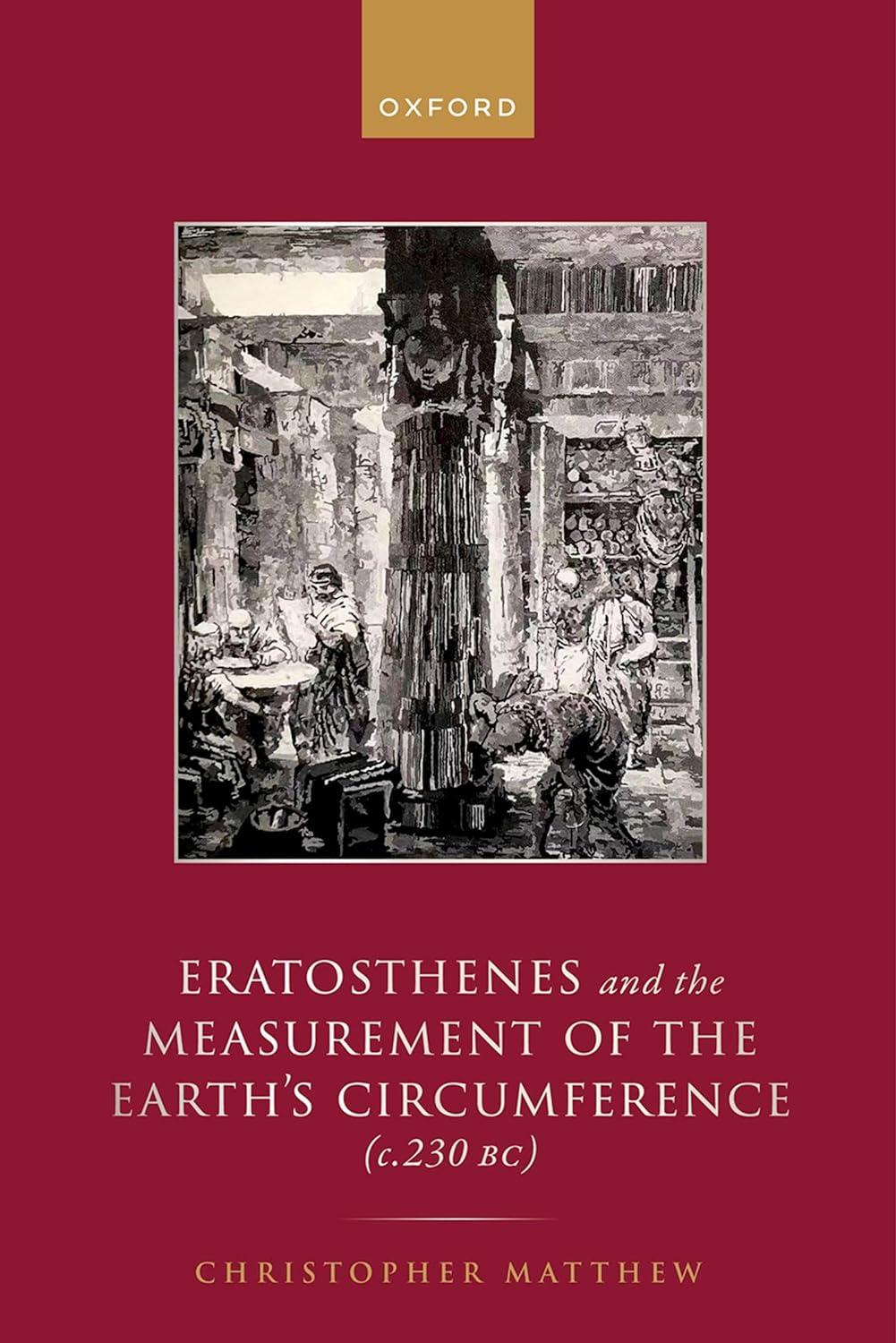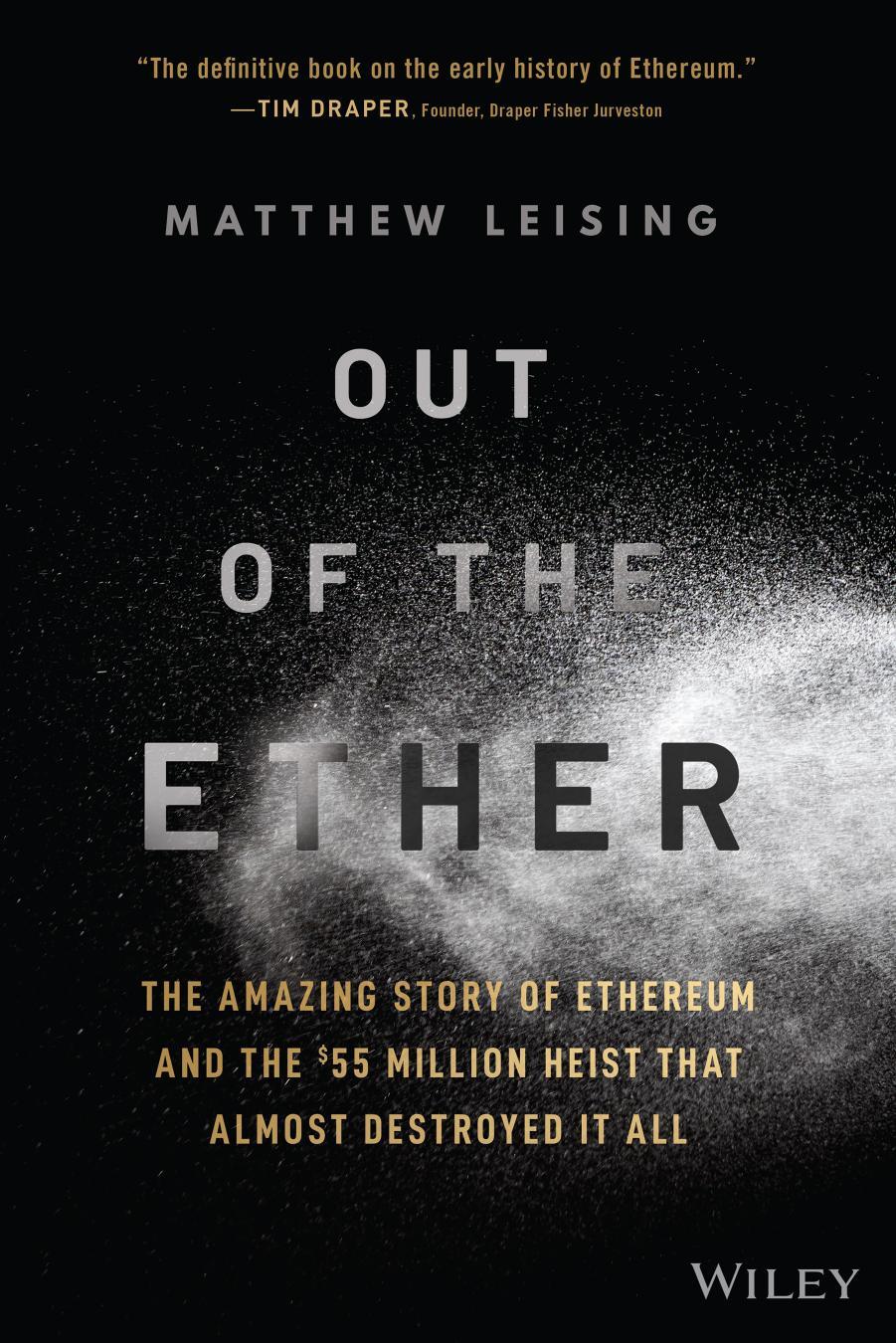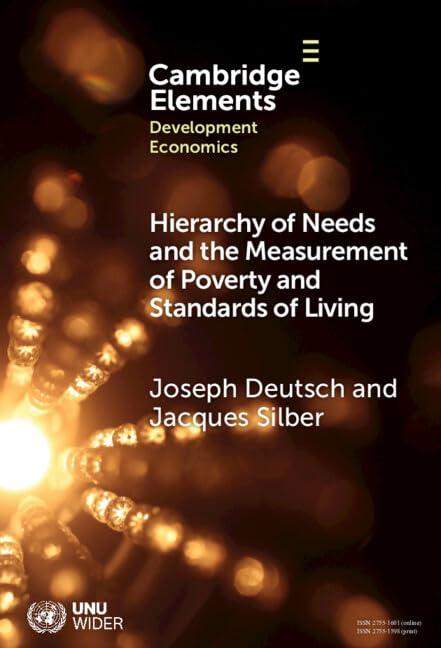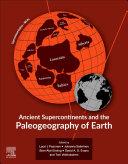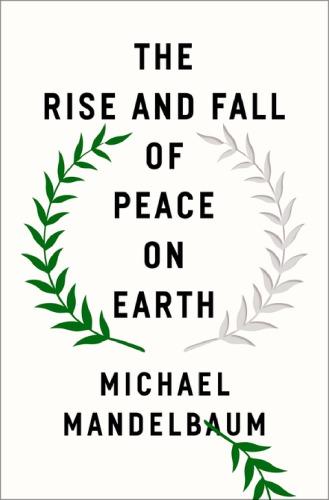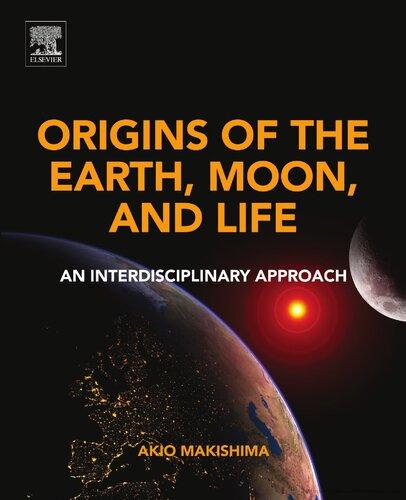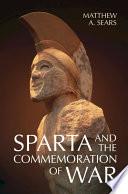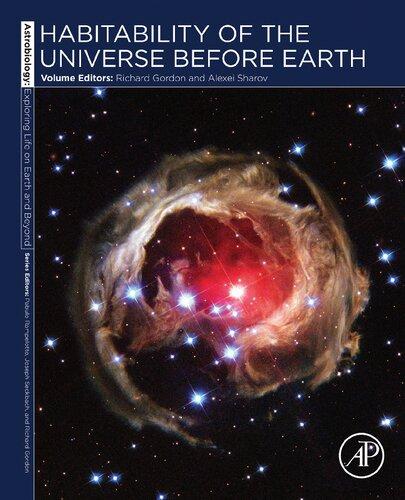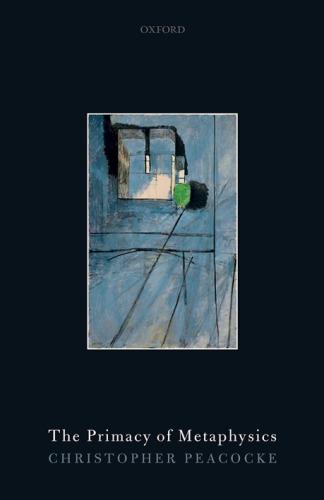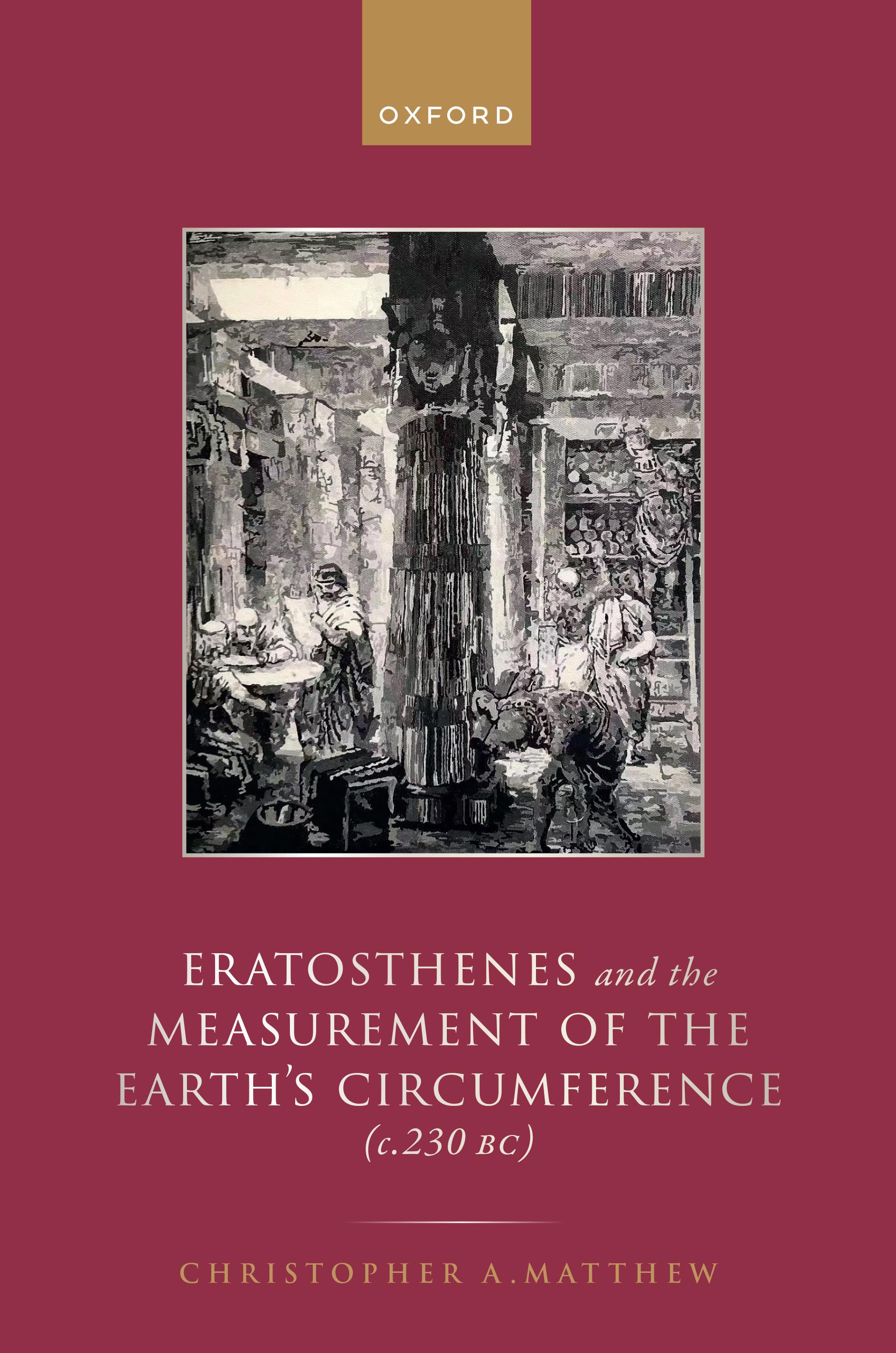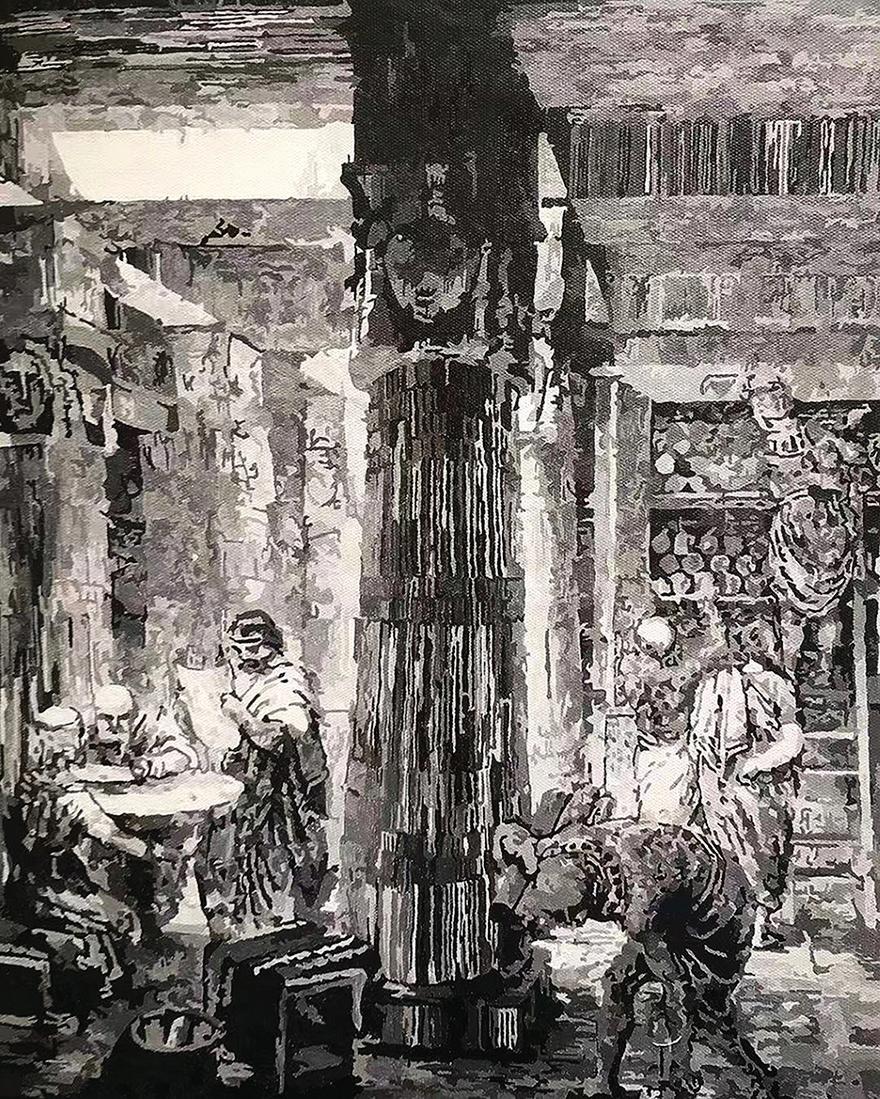Acknowledgements
IwishtoexpressmygratitudetoProfessorMiroslavFilipovic,ProfessorRay Norris,andDoctorNicholasTothill,ofWesternSydneyUniversity,fortheir encouragementandsupportduringtheresearchforthisproject.Ialsowish tothankAllisonSmithforherunwaveringcare,support,andinterestduring thetimeofthisproject,andDrBillFranzen,lecturerofmathematicsatthe AustralianCatholicUniversity,foralloftheassistanceandinterestthathehas givenduringtheresearchofthistopic.Additionally,IwishtothankWerner Schreinerfromskaphe.deforhisassistanceandsupportinthemanufacture ofareplicasundialfromthethirdcentury BC,whichhelpedtobringseveral aspectsofthisresearchtolife.IwouldalsoliketothankDoctorAindeHorta fromWesternSydneyUniversityforhisassistancewiththere-creativeexperimentsthatformedpartofthisresearch.Furthermore,Iwouldliketothank MichaelLewisforprovidingtheimagesofhisuseofareplicadioptra,andKen SheedyfromtheAustralianCentreforAncientNumismaticStudiesforthe imagesofacoinfromCyrene,whichcanbefoundwithinthiswork.Finally, Iwouldliketothankalloftheotherfriendsandcolleagueswhohavegiven theirsupportandfeedbackduringtheresearchandwritingprocesseswhich havebroughtthisprojecttofruition.
Author
Abbreviation
Abbreviations
AncientSources
Author TitleAbbreviationTitle
Ach.Tat. AchillesTatius AratiPhaenom. Introductionto Aratus’‘Phenomena’ Leucip. Leucippeand Clitophon
Ael. Aelian VH VariaHistoria NA OntheNatureof Animals (DeNatura Animalium)
Ael.Tact. Aelian(Tacticus) Tact. Tactics
Aet. Aetius Opinionsof Philosophers
Alcm. Alcman Par. Partheneion
Amm. Ammianus Marcellinus RomanHistory
Anonymous Texts Epit.Aris. TheLetterofAristeas
P.Hib. TheHibehPapyrus
P.Oxy. TheOxyrhynchus Papyrus
Schol.inAr.Ran.Scholiaon Aristophanes‘Frogs’ Schol.inPtol.Alma.ScholiaonPtolemy ‘Almagest’
AP PalatineAnthology
Ap.Rhod. Apolloniusof Rhodes Argon. Argonautica
App. Appian
Apth. Aphthonius
BCiv. CivilWars
Syr. SyrianWar
Prog. Progymnasmata
Ar. Aristophanes Av. Birds
Eccl. TheAssemblywomen
Ran. Frogs
Archim. Archimedes Meth. MethodofMechanical Theorems
Psam. TheSandReckoner
Arist. Aristotle Ath.Pol. TheAthenian Constitution
Cael. OntheHeavens
DeAn. OntheSoul
Eth.Nic. NicomacheanEthics
Metaph. Metaphysics
Mete. Meteorology
Oec. Economics
Ph. Physics
Pol. Politics
Sens. SenseandSensibilia
Aristarch.Sam.Aristarchusof Samos DeMag. OntheSizesand DistancesoftheSun andMoon
Arr. Arrian Anab. AnabasisofAlexander theGreat
Frag.Phy. FragmentsonPhysics
Tact. Tactics
Asclep. Asclepiodotus Tact. Tactics
Ath. Athenaeus
Diep. TheLearned Banqueters
Autol. Autolycus DeSph. OntheMovingSphere
Ort.etOcc. RisingsandSettings
Caes. Caesar BC TheCivilWar
Cass.Dio CassiusDio RomanHistory
Cic. Cicero Acad. AcademicQuestions
DeOr. OnOration
Div. OnDivination
Nat.D. OntheNatureofthe Gods
Rep. Republic
Clem.Al. Clementof Alexandria Strom. Miscellanies
Cleom. Cleomedes Demotu OntheCircular MotionsofCelestial Bodies
CPI CorpusofPtolemaic Inscriptions
Curt. QuintusCurtius TheCampaignof AlexandertheGreat
Dem. Demosthenes Orations
Did. Didymos inD. OnDemosthenes
DioChrys. DioChrysostom Or. Orations
Diod.Sic. DiodorusofSicily LibraryofHistory
Diog.Laert.DiogenesLaertius LivesofEminent Philosophers
Dion.Cyz. Dionysiusof Cyzicus OnE. OnEratosthenes
Epiph. Epiphanius Mens. OnWeightsand Measures
Euc. Euclid El. Elementa Phae. Phaenomena
Continued
Continued
Author
Abbreviation
Author TitleAbbreviationTitle
Eus. Eusebius
Eutoc. Eutocius
Chron. Chronicle
DE Demonstrationofthe Gospel
PE Preparationofthe Gospel
PG PatrologiaGraeca
InArch.circ.dim.Commentaryonthe WorksofArchimedes andApollonius
Flor. Florus Epit. Epitome
Gal. Galen
Hipp.DeNat.Hom.OnHippocrates ‘NatureofMan’
Hipp.Epid. OnHippocrates ‘Epidemics’ Inst.log. IntroductiontoLogic Phil.Hist. HistoryofPhilosophy
Gell. AulusGellius NA AtticNights
Gem. Geminus Isagoge Introductionto Phaenomena
Hdn. Herodian Gr. TechnicalRemains
Hdt. Herodotus TheHistories
Hero. HeronofAlexandria Dioptr. Dioptra Met. MetrologicalTables
Herod. Herodas Mimes
Hes. Hesiod Op. WorksandDays Theog. Theogony
Hipparch. Hipparchus InAr.etEud. Commentaryon AratusandEudoxus
Hippol. Hippolytus Refut. RefutationofAll Heresies
Hom. Homer Il. Iliad Od. Odyssey
Hor. Horace Carm. SecularSongs
Hsch. Hesychius Lex. Lexicon
Hyg. Hyginus Ast.Po. PoeticAstronomy
Hypsicl. Hypsicles Anaph. OnAscensions
Jer. Jerome Chron. Chronicle
Joseph. Josephus AJ JewishAntiquities
Ap. AgainstApion
BJ TheJewishWar
Just. Justin Epit. Epitomeofthe PhilippicHistoryof PompeiusTrogus
Longinus
ABBREVIATIONS xi
Subl. OntheSublime
Luc. Lucan Pharsalia
Luc. Lucian ProLapsu ASlipoftheTonguein Greeting
Lucr. Lucretius OntheNatureof Things
Lyd. JohnLydus Mens. OntheMonths
Macr. Macrobius InSomn. DreamofScipio Sat. Saturnalia
Marc. MarcianofHeraclea Perip. Periplusofthe ExternalSea
Mart.Cap. MartianusCapella Phil. TheMarriageof Philologyand Mercury
Nicom. Nicomachus Arith. Introductionto Arithmetic
Harm. Harmonics
Pallad. Palladius Agric. AgriculturalWorks Papp. Pappus inPtol.Alma. Commentaryon Ptolemy‘Almagest’
Syn. TheCollection
Paus. Pausanius DescriptionofGreece Philo PhiloofAlexandria inMos. OnMoses
Phlp. Philoponus InMete. Commentaryon Aristotle’sMeteorology
Pl. Plato
Ap. Apology
Cra. Cratylus
Cri. Crito
Epin. Epinomis Grg. Gorgias
L. Letters Lach. Laches
Leg. Laws Men. Meno Phd. Phaedo Resp. Republic Tht. Theaetetus
Ti. Timaeus
Plin.(E) PlinytheElder HN NaturalHistory
Plut. Plutarch Alex. LifeofAlexander Caes. LifeofCaesar
DeE. Onthe‘E’atDelphi DeFacie OntheFaceofthe Moon
DeIs.etOs. OnIsisandOsiris DePyth.Or. OnthePythia’s Prophecies
Continued
Continued
Author Abbreviation
Author
TitleAbbreviationTitle
Marc. LifeofMarcellus
Mor. Moralia
Nic. LifeofNicias
Per. LifeofPericles
Plac.Philos. Doctrinesofthe Philosophers
Quaest.Plat. PlatonicQuestions
Sept.Sap.Conv. Symposiumofthe SevenSages
Stromat. Miscellaneous Fragments
Sull. LifeofSulla Them. LifeofThemistocles
Plut. Dion. Ath. Diep.
Polyaenus Polyaenus Strat. StrategemsofWar
Polyb. Polybius Histories
Procl. Proclus Hyp. Hypotyposis Astronomicarum Positionum
InEuc. Commentaryon Euclid‘Elements’
Ps-Call. Pseudo-Callisthenes TheRomanceof Alexander
Ps.Dem. Pseudo-Democritus Alc. NaturalandSecret Questions
Ps.Plut. Pseudo-Plutarch Epit. Letters
Ptol. Ptolemy Alm. Almagest
Anal. TheAnalemma
Geog. Geography
Harm. Harmonics
Quint. Quintilian Inst. InstitutioOratoria
Sen. SenecatheYounger QNat. NaturalQuestions
Tranq. Tranquillityofthe Mind
Serv. Servius A. Commentaryon Virgil’sAeneid
Sext.Emp. SextusEmpiricus Math. Againstthe Mathematicians
SIG SyllogeInscriptionum Graecarum
Simpl. Simplicius inCael. Commentaryof Aristotle‘Onthe Heavens’
InPhys. OnPhysics
Steph.Byz. Stephanusof Byzantium Lexicon
Stob. Stobaeus Ecl. Eclogues
Str. Strabo Geog. Geography
Suda TheSuda
Sync. Syncellus Chron. Chronographia
Thdt. Theodoret CAG CureforPagan Maladies
Theoc. Theocritus Id. Idylls
Theon. TheonofSmyrna Expos. Aspectsof MathematicsUseful fortheReadingof Plato
Theoph. Theophrastus CausPl. EnquiryintoPlants
Thuc. Thucydides Historyofthe PeloponnesianWar
Tz. JohnTzetzes Prol.Com. Commentaryon Comedy
Val.Max. ValeriusMaximus MemorableDeedsand Sayings
Veg. Vegetius Mil. EpitomeofMilitary Science
Vit. Vitruvius DeArch. OnArchitecture
Xen. Xenophon Hell. Hellenica Mem. Memorabilia
Journals
Abbreviation
A&AT
Title
Astronomy&AstrophysicsTransactions
AAATec ArchaeoastronomyandAncientTechnologies
Adv.SpaceRes. AdvancesinSpaceResearch
AHB AncientHistoryBulletin
Aion Aion
AJA AmericanJournalofArchaeology
Am.Journ.Phil. AmericanJournalofPhilology
Am.J.Phys.Anthropol. AmericanJournalofPhysicalAnthropology
AncSoc AncientSociety
AncW AncientWorld
Ann.Soc.Sci.Bruxelles,Ser.A
AnnalesdelaSociéteScientifiquede Bruxelles—SérieA
AntJ TheAntiquariesJournal
Arch.Hist.ExactSci. ArchiveforHistoryofExactSciences
Ath.Mitt. AthenischeMittielungen
Athenaeum Athenaeum
AVN AllgemeineVermessungs-Nachrichten
BCH Bulletindecorrespondencehellénique
BonnerJahrb. BonnerJahrbucher
Continued
Continued
Abbreviation
Br.J.Hist.Sci.
Title
TheBritishJournalfortheHistoryofScience
BSA BibliotecadiStudiAntichi
BZ
Centaurus
ByzantinischeZeitschrift
Centaurus
Chiron Chiron
CJ ClassicalJournal
Cl.Phil. ClassicalPhilology
Class.Antiq. ClassicalAntiquity
Configurations
CQ
DHA
Configurations
ClassicalQuarterly
Dialoguesd'histoireancienne
G&R Greece&Rome
H.M.Inst.R.Fr.
Hesperia
HISTMATH
Historia
Histoireetmémoiresdel'Institutroyalde France
Hesperia
HistoriaMathematica
Historia:Zeitschriftfu¨rAlteGeschichte
Isis Isis
J.Astron.Hist.Herit.
JournalofAstronomicalHistoryandHeritage
J.ForensicLeg.Med. JournalofForensicandLegalMedicine
J.Hist.Astron.
JournalfortheHistoryofAstronomy
J.Inst.Navig. JournaloftheInstituteforNavigation
J.R.Asiat.Soc. TheJournaloftheRoyalAsiaticSocietyofGreat BritainandIreland
Jahrb.BerlinMuseen
Janus
JahrbuchderBerlinerMuseen
Janus
JHS JournalofHellenicStudies
JRS JournalofRomanStudies
Klio Klio
Math.Mag. MathematicsMagazine
MDAIK
MitteilungendesDeutschenArcha¨ologischen Instituts,AbteilungKairo
MedAnt MediterraneoAntico
Mém.Acad.Inscript.etbelles-lettresMémoiresdel’AcadémiedeInscriptionset belles-lettres
Mem.Acad.Sci.Inst.Fr. Mémoiresdel’Académiedessciencesdel’Institut deFrance
Mil.Psychol. MilitaryPsychology
MMAB MetropolitanMuseumofArtBulletin
Nikephoros
Orb.Terr.
Nikephoros
OrbisTerrarum:JournalofHistorical GeographyoftheAncientWorld
PAPS PublicationoftheAmericanPhilosophical Society
PhilologusSuppl.
ABBREVIATIONS
PhilologusSupplement
Philos.Antiq. PhilosophiaAntiqua
Philos.Trans.R.Soc. PhilosophicalTransactionsoftheRoyalSociety ofLondon
Phronesis
Phronesis
PNAS ProceedingsoftheAmericanAcademyofArts andSciences
Publ.Astron.Soc.Pac.
Q.JlR.Astr.Soc.
QAL
PublicationsoftheAstronomicalSocietyofthe Pacific
QuarterlyJournaloftheRoyalAstronomical Society
QuadernidiarcheologiaLibia
Renaiss.Stud. RenaissanceStudies
SAK StudienzurAlta¨gyptischenKultur
SAOC StudiesinAncientOrientalCivilization
SciAm ScientificAmerican
TAPA TransactionsoftheAmericanPhilological Association
TPR TheTownPlanningReview
Trans.R.Soc.Edinburgh TransactionsoftheRoyalSocietyofEdinburgh
VDI Vertuicdrevnejistorii
Vist.Astron. VistasinAstronomy
ZĀS Zeitschriftfu¨rA ¨ gyptischeSpracheund Altertumskunde
Zeitschr.d.Gesell.f.ErdkundezuBerlinZeitschriftderGesellschaftfu¨rErdkundezu Berlin
Illustrations
TITLEPAGE.Paintedrecreationoftheengraving ImaginedInteriorof theAlexandriaLibrary byO.vonCorven(1882).Painted artworkbyC.A.Matthew(2021). iii
Fig.1.TheopeningpagesofZeigler’s1891editionofCleomedes’ textonastronomy. 2
Fig.2.Asilver didrachm fromCyrene ca.305–300 BC witha depictionoftheSilphiumplantonthereverse. 10
Fig.3.Nineteenth-centurymapofancientAlexandria,overlaid uponaplanofthemoderncity,showingconfirmedand supposedlocationswithintheancientsite. 20
Fig.4.Eratosthenes’methodforcalculatingthecircumferenceofthe Earth(withanglesandcurvatureexaggerated).
Fig.5.RiversceneinthePalestrinaNileMosaic.
Fig.6.DetailofthePalestrinaNileMosaicshowingtheNile-o-meter atSyene(centre-left).
77
79
80
Fig.7.TheNile-o-meteratthetempleofKomOmbo,Egypt. 81
Fig.8.TheNile-o-meteratthetempleofKarnak,Egypt. 82
Fig.9.RepresentationofMin(left)andbifurcated gnomon inthe ShrineofMin,Karnak. 91
Fig.10.EgyptianshadowclockfromthetimeofThutmoseIII (EgyptianMuseum,Berlin,#19744).
96
Fig.11.Verticalsundialfromthethirteenthcentury BC fromthe ValleyoftheKings,Egypt(UniversityofBasel). 98
Fig.12.Useoftheshadowclocktomarkaverticalsundialasper Vodolazhskaya. 99
Fig.13.MarbleslopingsundialfromThebes,Egypt(fourthcentury BC)(MetropolitanMuseumofArt#12.181.307).
100
Fig.14.The pelekinon createdbyastanding gnomon-staffsundial. 101
Fig.15.Amodernrecreationofthehemispherical skaphe. 104
Fig.16.Crosssectionthroughthenoonlineofahemispherical skaphe showingtheangleoftheSun(reddottedlines)onthe SolsticesandEquinoxes.
106
Fig.17.DesignschematicsforthereplicaofEratosthenes’ skaphe. 113
Fig.18.Computermodellingofthedesignofthe gnomon forthe replicasundial. 114
Fig.19.Computermodellingofthe arachne forthereplicasundial. 114
Fig.20.Laseretchingthelinesofthe arachne ontothereplicasundial. 115
Fig.21.Thecompletereplica skaphe. 115
Fig.22.ThereplicasundialsetontoaDobsonianmount. 116
Fig.23.Theshadowofthe gnomon whenthesundialwassetto replicatenoonontheSummerSolstice. 117
Fig.24.SatelliteimageofthelocationofCrescentHead. 118
Fig.25.The equationoftime forthesouthernhemisphere. 120
Fig.26.DataforthesolarculminationtimeontheSummerSolstice atCrescentHead,takenfromsuncalc.org. 124
Fig.27.Thecompassandspiritlevelsusedtoalignthesundial. 125
Fig.28.Thelocationoftheshadowcastbythe gnomon ofthereplica sundialfifteenminutespriortonoon(LAT)ontheSummer SolsticeinCrescentHead. 126
Fig.29.Theshadowcastbythe gnomon ofthereplicasundialatnoon (LAT)inCrescentHead. 127
Fig.30.ThesphericalproblemwithEratosthenes’angleidentifiedby Goldstein. 130
Fig.31.InEratosthenes’experiment,anglesXandYareequal. 131
Fig.32.Walkup’smethodofcalculatingthecircumferenceofthe Earth(withanglesexaggerated).
132
Fig.33.Planview(top)andcrosssectionthroughthenoonline (bottom)ofahemispherical skaphe calibratedforSyene. 134
Fig.34.Planview(top)andcrosssectionthroughthenoonline (bottom)ofahemispherical skaphe calibratedforAlexandria. 135
Fig.35.ThestripofpaperusedtomeasurethepositionsofpointsGA, SA,andHA onthereplicasundial. 136
Fig.36.Egypt,showingthelocationofAlexandria,Syene(Aswan) andtheTropicofCancer. 141
Fig.37.Determinationofthelongitudinaldistancebetween AlexandriaandSyene(withtheanglesandcurvature exaggerated). 142
Fig.38.Therelationshipbetweengeocentriclatitudeonaspherical Earth(redline/blackcircle)andthegeographicallatitudeon ageodicEarth(blueline/dottedellipse). 151
Fig.39.Aristarchus’proofthatalargersphereilluminatesmorethan ahemisphereofasmallersphere—fromCommandino’s1572
editionofAristarchus’ OntheSizesandDistancesoftheSun andMoon. 166
Fig.40.Determinationoftheangleofsunlightbaseduponthevalues ofAristarchus(nottoscale). 167
Fig.41.CalculationoftheangleatwhichSunlightreachestheEarth (nottoscale). 167
Fig.42.Determinationoftheangleofsunlightbaseduponone interpretationofthevaluesofEratosthenes(nottoscale). 168
Fig.43.Determinationoftheangleofsunlightbaseduponthevalues ofEratosthenesanda0.5∘ angularsizeoftheSun(nottoscale). 168
Fig.44.Determinationoftheangleofsunlightbaseduponthe alternatevaluesofEratosthenes(nottoscale). 169
Fig.45.CarmenandEvan’smethodofcalculatingtheangleof sunlightusingratios. 170
Fig.46.Determinationoftheangleofsunlightbasedupon Archimedes’valueofEarth’scircumference(nottoscale). 171
Fig.47.HowlightfromtheSunreachesapointontheEarthat differentanglesduetoitnotbeingapoint-sourceoflight. 172
Fig.48.Thecreationoftheumbraandpenumbraofashadowbythe Sun. 173
Fig.49.Theshadowcastbythe gnomon ofthereplicasundialatnoon (LAT)ontheWinterSolstice. 175
Fig.50.Resultofare-creativeexperimenttoobservetheshadowcast byasundialatnoonnotlongaftertheSummerSolstice. 177
Fig.51.Calculatingthesizeofthepenumbraforthereplicasundial atnoonontheSummerSolstice. 178
Fig.52.Calculatingthesizeofthepenumbraforthereplicasundialat noonontheSummerSolsticewiththecharacteristicsofthe SunasperAristarchus. 182
Fig.53.TheangularsizeofEratosthenes’Sunatadistanceof 804,000,000 stadia 183
Fig.54.TheangularsizeofEratosthenes’Sunatadistanceof 4,808,000 stadia. 183
Fig.55.Howplanetaryrotationaffectslinesprojecteddownward fromthesurface. 186
Fig.56.Howthedeviationofagnomonawayfromtheverticalaffects thelengthoftheshadowthatiscast(withanglesexaggerated). 189
Fig.57.Theeffectofatmosphericrefraction(withanglesand curvatureexaggerated). 192
Fig.58.ThestadiumatOlympia,Greece.Thelineofstonesattheend ofthe‘track’intheforegroundarethestarter’s‘blocks’forthe runningraces.Thefinishline,one stade lengthaway,isjust beyondthelocationofthepeopleinthedistance. 206
Fig.59.SatelliteimageofthestadiumatOlympia,Greece,withthe lengthofthe stade betweenthestartandfinishlines. 208
Fig.60.SatelliteimageofthePanathenaicstadiumatAthens,Greece, withthelengthofthe stade betweenthestartandfinishlines. 209
Fig.61.SatelliteimageofthestadiumatAphrodisias,Turkey,with thelengthofthe stade betweenthestartandfinishlines. 210
Fig.62.SatelliteimageofthestadiumatDelphi,Greece,withthe lengthofthe stade betweenthestartandfinishlines. 211
Fig.63.SatelliteimageofthestadiumatEpidaurus,Greece,withthe lengthofthe stade betweenthestartandfinishlines. 211
Fig.64.SatelliteimageofthestadiumatMessene,Greece,withthe lengthofthe stade betweenthestartandfinishlines. 212
Fig.65.Aphotograph(top)andlinedrawing(bottom)ofthe metrologicalrelieffoundonSalamis(now.PiraeusMuseum #5352). 213
Fig.66.PhotographofthemetrologicalreliefintheAshmolean Museum,Oxford. 214
Fig.67.TheroutesbetweentheCaspianGates(Shahr-e-Rey)and Hecatompylos(Damghan).
Fig.68.TheroutebetweenHecatompylos(Damghan)and AlexandriaAerion(Herat).
240
244
Fig.69.TheroutebetweenAlexandriaAerion(Herat)and Prophthasia(Farrah). 246
Fig.70.TheroutebetweenProphthasia(Farrah)andArachotiPolis (Qalat-el-Gilzay). 248
Fig.71.TheroutebetweenAlexandriaAerion(Herat)andArachoti Polis(Qalat-el-Gilzay). 249
Fig.72.TheroutebetweenArachotiPolis(Qalat-el-Gilzay)and Hortospana(Kabul). 250
Fig.73.TheroutebetweenAlexandriaAerion(Herat)and Bactra-Zariapsa(Balkh).
Fig.74.TheroutebetweenAlexandriaandSyene(Aswan),following thecourseoftheNile.
Fig.75.TheroutebetweenAlexandriaandSyene(Aswan),avoiding thebendintheNileatLuxor.
252
263
266
Fig.76.ThelineardistancebetweenAlexandriaandSyene(Aswan). 267
Fig.77.DeterminationofthelatitudinaldistancebetweenAlexandria andSyene(withtheanglesandcurvatureexaggerated). 278
Fig.78.Measuringlateralanglesusingareplica dioptra ina horizontalorientation. 292
Fig.79.Measuringelevationanglesusingareplica dioptra ina verticalorientation. 293
Fig.80.ArepresentationoftheglobeaccordingtoCratesofMallus. 299
Tables
Table1.SourcesonEratosthenes’Earth:Sundistance. 162
Table2.ThecumulativeeffectoferrorsinEratosthenes’calculations. 203
Table3.AncientGreekunitsofmeasure. 206
Table4.Thevaryingsizeofthe stade acrossClassicalandHellenistic Greece. 218
Table5.Theconversionofa250,000 stade circumferenceoftheEarth byknownsizesofthe stade,withmarginsoferror. 218
Table6.Theconversionofdistancesforthedifferentroutesbetween theCaspianGatesandHecatompylos,byknownsizesofthe stade,withmarginsoferror. 241
Table7.Theconversionofdistancesbetweenalternativesitesforthe CaspianGatesandHecatompylosbyknownsizesofthe stade,withmarginsoferror. 242
Table8.TheconversionofthedistancebetweenHecatompylosand AlexandriaAerionbyknownsizesofthe stade,withmargins oferror. 244
Table9.TheconversionofthedistancebetweenAlexandriaAerion andProphthasiabyknownsizesofthe stade,withmarginsof error. 246
Table10.TheconversionofthedistancebetweenAlexandriaAerion andArachotiPolisbyknownsizesofthe stade,withmargins oferror. 249
Table11.TheconversionofthedistancebetweenArachotiPolisand Hortospanabyknownsizesofthe stade,withmarginsoferror. 251
Table12.TheconversionofthedistancebetweenAlexandriaAerion andBactra-Zariaspabyknownsizesofthe stade,with marginsoferror. 253
Table13.Eratosthenes’distances,ascitedinStrabo,convertedto moderndistancesusinga177m,180m,and185m stade, comparedtoactualdistances,andwithmarginsoferror. 254
Table14.TheconversionofthedistancebetweenAlexandriaand Syenebyknownsizesofthe stade,withmarginsoferror. 266
Table15.TheconversionofthelineardistancebetweenAlexandria andSyenebyknownsizesofthe stade,withmarginsoferror. 268
Table16.Theconversionofa224,100 stade circumferenceoftheEarth byknownsizesofthe stade,withmarginsoferror. 272
Table17.PossiblepairsofstarsusedinPtolemy’s‘zenith-angle’method. 294
Preface
Inthelatethirdcentury BC,Eratosthenes,thenchieflibrarianoftheGreat LibraryofAlexandriainEgypt,calculatedthecircumferenceoftheEarth baseduponthedifferencebetweentheshadowcastbythepointer(gnomon) ofasundialinAlexandriaatmiddayontheSummerSolstice,andcompared theanglecreatedbytheshadowtotheknowledgethatatthecityofSyene tothesouthnoshadowwascastbya gnomon atthesametimeonthesame day.AccountsoftheattemptbyEratosthenestoaccuratelycalculatethecircumferenceoftheEarthhavetakenonanear-legendarystatus—appearing inacademictextsandjournals,onlinevideos,populartelevisionprogrammes, andchildren’sbooks.¹However,theaccountsofEratosthenes’workare,unfortunately,lackingseveralspecificdetailswhichwouldallowfortheaccuracy ofhisresultstobeinitiallydetermined.Thisisparticularlythecaseintrying toconverttheresults,whichweregiveninanancientunitofmeasure(the stade),intoamodernequivalent.Thisisbecausetherewereseveraldifferent systemsofmeasurementinuseacrosstheancientGreekworldthatincorporatedaunitcalleda stade,buttheseunitswereallofdifferentlengths.This hasledtoconsiderablescholarlydebate,almostsincethetimethatthecalculationsweremade,overthesizeoftheunitthatEratostheneswasusing,and subsequentlytheaccuracyofhisresults.
ThesizeofEratosthenes’ stade hasbeenthetopicofconsiderablescholarly debate—inpartbecausescholarswritingfromanastronomicalperspective rarelydealwithallofthehistorical,philological,archaeological,andlinguisticevidence,andscholarswritingfromahistoricalperspectiverarelyengage fullywiththeastronomicalevidence.Consequently,allpriorexaminationson thistopicareincomplete,inconclusiveorincorrect.However,acriticalreexaminationofEratosthenes’experimentwillallowfortheaccuracyofhis resulttobedetermined.
¹ CitationsofthemanyacademicworksonEratosthenescanbefoundthroughoutthiswork.Placing thesearchterm‘EratosthenesmeasurementoftheEarth’intoYouTubeorGoogleresultsinnumerous hits.AnexcellentexampleofadiscussionofEratosthenesinadocumentarycanbefoundin Episode 1:TheShoresoftheCosmicOcean ofCarlSagan’saward-winningtelevisionseries Cosmos (00:30:05–00:36:43).ForexamplesofworksonEratosthenesthatarepitchedatyoungerreaders,see:K.Lasky, TheLibrarianwhoMeasuredtheEarth(NewYork,LittleBrownBooks,1994)andM.Gow,Measuring theEarth:EratosthenesandHisCelestialGeometry (BerkeleyHeights,Enslow,2010).
Theaimofthisprojectistore-evaluatetheresultsofEratosthenes’calculationsthroughare-examinationofalloftheavailableevidence—astronomical, philological,historical,andarchaeological.This,inturn,willallowforengagementwiththelong-runningscholarlydebateoverthistopictobeundertaken inordertoidentifyanyerrorsoromissionsinthesepriortheories,andaccount fortheseerrors.Thisprojectwillexaminetheavailabledatatocompilethefirst multi-disciplinaryre-evaluationofEratosthenes’workinordertoaddresstwo keyresearchobjectives:
1. DeterminethesizeofthestadethatEratosthenesusedinhiscalculations.
2. DeterminetheaccuracyofEratosthenes’calculationofthecircumferenceoftheEarth.
Asaresult,thisprojectwillprovidethefirstmulti-disciplinaryanalysisof thisimportanteventinthehistoryofastronomyandtheancientattemptsto understandourplaceinawideruniverse.
Throughacriticalexaminationoftheavailableevidence,itcanbeshown thatEratostheneswasusinga stade of180minlengthinhisdetermination oftheEarth’scircumference.Aunitofthissizehasneverbeenappliedtoan analysisofEratosthenes’workbeforenow,andconstitutesanoriginalcontributionbythisnewresearch.Theuseofaunitofthissizeisconfirmedthrough acomparisonofstateddistancesbetweenlocationsinIran,Afghanistan,and EgyptthatareattributedtoEratostheneswith‘ontheground’measurements obtainedusingsatellitemappingsoftware(GoogleEarth).Thishasalsonever beenappliedtotheexaminationofEratosthenes,andconstitutesanother originalcontributionofthisresearch.
Furthermore,anexaminationofseveralkeyancientpassages,whichhave beenignoredbymanypreviousscholars,demonstratesthattheresultof Eratosthenes’calculationswasacircumferenceofaround224,000 stadia—as opposedtothe250,000or252,000 stade figuresthatformthebasisofallprior studiesintothistopic—andthatthiswasbaseduponalatitudinaldistance, determinedusingsundials,betweenthetwolocationswhichformedafundamentalelementofhisdeterminationofthesizeoftheEarth.Theresultsofthis investigationshowthatEratosthenes’calculationswerehighlyaccurate—with amarginoferrorof<1%.
HistoricalBackground
1.1 TheSources
TherearenumeroussourcesavailableforthestudyofEratosthenes’calculationofthecircumferenceoftheEarth.TheprimaryancienttextisCleomedes’ OntheCircularMotionsofCelestialBodies (Kυκλικὴ Θεωρία Mετεώρων or Demotucircularicoporumcealestium)which,whilewrittenseveralhundredyearsafterthetimeofEratosthenes,istheearliestsurvivingaccountthat detailsEratosthenes’work,theassumedknowledgehewasworkingfrom,his experimentandcalculations,andhisresults(Fig. 1).¹
CleomedesrecountsthatEratosthenesusedobservationsoftheshadows castbysundialsintwolocationsonthesamedaytodeterminethedifferencein theanglecratedbythoseshadows,whichrepresentedafractionofafullcircle. HethenappliedthatfractiontothedistancebetweenthosetwositestodeterminethecircumferenceoftheEarth.Throughhiscalculations,Eratosthenes concludedthatthecircumferenceoftheEarthwas250,000 stadia.² Detailsof Eratosthenes’workisalsofoundinotherancienttexts,mainlyfromthefirst andsecondcenturiesADsuchas Geography byStrabo,Ptolemy’s Almagest and Geography,andPlinytheElder’s NaturalisHistoria (NaturalHistory).³
ThemainbiographicalinformationonthelifeandcareerofEratosthenesis foundinanevenlaterancienttext—theByzantineEralexicon,TheSuda,from
¹ TheexacttitleofCleomedes’work,andeveniftherewasone,isunknown.Theexactdateof theworkisalsounknown,butcanbenoearlierthanthefirstcentury AD baseduponthingsthatare referredtointhetext.TheLatintitlegivenhere, Demotucircularicorporumcaelestium,comesfrom Renaissance-eramanuscriptsofthetext,andtheGreektitle,Kυκλικὴ Θεωρία Mετεώρων,comesfrom Ziegler’s1891EditionpublishedbyB.G.TeubneriinLipsiae.Seealso: A.C.BowenandR.B.Todd (trans.), Cleomedes’LecturesonAstronomy (Berkeley,UniversityofCaliforniaPress,2004),pp.1–4.It shouldalsobenotedthatalmostnoneoftheancienttexts,andtranslations,arederivedfromoriginal sourcedocuments,butratherfromMedieval-eracopiesandmanuscriptsofthesetextsattheearliest. Thisposespotentialproblemsasthetextshavebeentranslated,andcopiedbyhand,fromtheiroriginal GreekandLatin,thenpossiblyintoArabicintheearlyMiddleAges,beforebeingtranslatedbackinto GreekandLatininthetimeoftheRenaissance.Consequently,transcriptionerrorscannotbefully ruledout.
² Cleom. Demotu,1.10.
³ Str. Geog. 1.2.1–2,1.2.3–7;Ptol. Alm. H68;Ptol. Geog. 1.7.1,7.5.12;Plin.(E) HN 5.132.
EratosthenesandtheMeasurementoftheEarth'sCircumference(c.230BC).ChristopherA.Matthew,OxfordUniversityPress. ©ChristopherA.Matthew(2023).DOI:10.1093/oso/9780198874294.003.0001
Fig.1 TheopeningpagesofZeigler’s1891editionofCleomedes’text onastronomy.
thetenthcentury.⁴ TheSuda issetoutinanencyclopaedicstylewithmore than30,000entries—manydrawinginformationfromancienttextsthathave notsurvivedtothepresentday.Theseancienttextshaveformedthebasis formanyofthemodernexaminationsintoEratosthenesandthesizeofthe stade.
However,theselatertextshavealsoaddedtothescholarlycontroversy overEratosthenesduetothempresentingslightlydifferentfigurestothose givenbyCleomedes.Manyofthelaterancienttextsgivetheirresultsinlater, Roman,unitsofmeasure(forwhichthereisalsosomedebateovertheirexact size),containpossibletranscriptionerrorsfromwhenthemanuscriptsof thesetextswerecopiedbyhandduringtheearlierpartsofthemodernworld, and/orcontainpotentialerrorsintranslation.Insomecases,theseissueshave compoundedtheproblemswithattemptingtounderstandtheaccuracyof Eratosthenes’work.Forexample,severallaterancientwriters,mainlyfrom thefirstcentury AD,giveEratosthenes’resultas252,000 stadia,ratherthan the250,000foundinCleomedes.⁵ Amuchlaterwriter,MarcianofHeraclea
⁴ Sudas.v. Ἐρατoσθένης. ⁵ Forexample,see:Gal. Inst.log. 12.2;Plin.(E), HN 2.112;Str. Geog. 2.5.7,2.5.34;Theon. Expos. 3.3;Vit. DeArch. 1.6.9;Hero. Dioptr. 36.
fromthefourthcentury AD,statesthatEratosthenes’resultwas259,200 stadia.⁶ However,Gosselindismissedthisfigureasmathematicalconvenience bydemonstratingthatitdividesevenlyinto720 stadia/degree,or12 stadia/minute,or1/5ofa stade/second—whichwould‘verymuchsimplifythe calculationoflatitudeandlongitude’.⁷ Letronne,ontheotherhand,sawthis figureasatransmissionerrorfromthecopyingofthemanuscriptandsuggestedthattheancientGreekfiguresfor259,200(Mκε´ιθσ)shouldactually bethosefor252,200(Mκε´ιβσ)—anunroundedversionofthevaluegivenin thetextsfromthefirstcentury AD.⁸ Regardlessofthereason,thehighervalue of259,200 stadia fortheresultofEratosthenes’calculationseemsunlikelyto havebeentheresultofhisexperimentanddoesnotwarrantanyfurtherinvestigationotherthaninanexaminationofthetransmissionoftheresultsover thecenturies(seesection5.2).
SomemodernscholarshavebasedtheirexaminationsofEratostheneson theacceptanceofthevalueof252,000 stade asthecorrectresult(asopposed tothe250,000figurefoundintheearliestreferenceinCleomedes)without consideringpotentialcausesforthedifferenceinthefiguressuchaserrorsby thelaterancientauthorsand/ortheirsources,orthepossibilitythattheselater authorswereofferingavaluethatconformedtotheidealsofPlatonicnumericalperfection.Platostatesthatthefigure5,040—thatis,252,000dividedby 50—istheidealnumberforuseinallmatterspertainingtothestate,asitis divisiblebyallnumbersfromonetoten.⁹ Theacceptanceofonevalueforthe resultovertheother,withlittleanalysisand/orjustificationfortheacceptance ofthatnumber,hasledtomanymoderntheoriesonEratosthenes’workthat donotconformtoalloftheavailablesourcesofevidence.Aswillbeshown, thereisevidencethathasnotbeenexaminedbypriorscholarsthatdemonstratesthatboththe250,000figure,andthe252,000figure,arelatertraditions thatareattributedtoEratosthenes,butarenotthetruevalueoftheresultsof hiscalculations(seesection5.2).Thismakesallofthepreviousstudiesinto theworkofEratostheneseitherincompleteorincorrect.
Oneofthefirstofthesemajormodernexaminationswaspublishedby Viedebanttin1915.¹⁰ Viedebanttbasedhisanalysisonworksbyearlierscholars,suchas Letronne(1822), Hultsch(1882),and Lehmann-Haupt(1896)
⁶ Marc. Perip. 1.4.
⁷ P.F.J.Gosselin, RecherchesfurlaGeographieSystematiqueetpositivedesAnciens (Paris,National InstituteofFrance,1798),p.14.
⁸ J.A.Letronne,‘Mémoiresurcettequestion:LesAnciensont-ilsexécutéunemesuredelaterre postérieurementàl’établissementdel’écoled’Alexandrie?’ H.M.Inst.R.Fr.6(1822),p.277.
⁹ Pl. Leg. 737e–744d.
¹⁰ O.Viedebantt,‘Eratosthenes,Hipparchos,Poseidonios’ Klio 14.14(1915),pp.207–256.
whohadconductedsomeoftheearliestexaminationsintothesizeofunits ofmeasureintheancientGreekandNearEasternworld.¹¹ However,Viedebantt’sexaminationcontainedseveralerrorsthatinfluencedthesizeofthe stade thatheattributedtoEratosthenes;suchasworkingfromtheassumptionthatEratosthenes’ stade wasthree-quartersoftheEgyptian stade,and basinghiscalculationsonanincorrectdistancebetweenthecitiesofAlexandriaandSyene—whichwasanintegralpartofEratosthenes’calculations.¹² Thus,whiledetailedinitsexamination,Viedebantt’sconclusionsareflawed inthattheydonotcorrelatewithotherpiecesofevidence,andtheanalysis ultimatelyreachesanincorrectvalueforthesizeoftheunitsusedbyEratosthenes(althoughViedebanttwouldhavebeenunawareofthatatthetimeof publication).
Subsequentexaminationshaveviewedtheevidenceprovidedintheancient texts,andinpriorscholarshipsuchasthatbyViedebantt,invariousways, andthishasresultedinseveralschoolsofthoughtemergingwithintheacademiccommunityovertheaccuracyofEratosthenes’calculationsandthesize ofthe stade.¹³ Diller,forexample,suggestedthatthe stade usedbyEratostheneswas159.2minlength.¹⁴ ThiswouldgiveEratosthenes’calculations aresultof39,800km(basedonCleomedes’valueof250,000 stadia forthe Earth’scircumference)—oramarginoferrorof−0.5percentwhencompared tothecurrentestimateofthepolarcircumferenceof40,007km.¹⁵ Dreyer,on
¹¹ Letronne, Mémoire,p.315; F.Hultsch, GriechischeundRo¨mischeMetrologie (Berlin,Weidmann, 1882),pp.30–34,697;C.F.F.Lehmann-Haupt,DasaltbsbylonischeMaßundGewichtssystemalsGrundlagederantikenGewichts,Mu¨nzundMaßsysteme (Leiden,Ausz.AusdenAktendes8internat. Orientalistenkomgresses,1896).
¹² ForhisassumedsizeofEratosthenes’ stade,see:Viedebantt,‘Eratosthenes’,p.209;forhisdistance betweenAlexandriaandSyene,see:Viedebantt,‘Eratosthenes’,p.215.
¹³ Forexample,onthevariousinterpretationsoverthesizeofthe stade,see:A.Diller,‘TheAncient MeasurementsoftheEarth’ Isis 40.1(1949),pp.6–9; A.Diller,‘JulianofAscalononStraboandthe Stade’ Cl.Phil.45.1(1950),pp.22–25; I.Fischer,‘AnotherLookatEratosthenes’andPosidonius’ DeterminationsoftheEarth’sCircumference’ Q.JlR.Astr.Soc.16(1975),pp.152–167; D.Rawlins,‘Eratosthenes’GeodesyUnraveled:WasThereaHigh-AccuracyHellenisticAstronomy?’ Isis 73.2 (1982),pp.259–265; D.Engels,‘TheLengthofEratosthenes’Stade’ Am.Journ.Phil.106.3(1985), pp.298–311;E.Gulbekian,‘TheOriginandValueoftheStadionUnitusedbyEratosthenesintheThird CenturyB.C.’ Arch.Hist.ExactSci.37.4(1987),pp.359–363; J.Dutka,‘Eratosthenes’Measurementof theEarthReconsidered’ Arch.Hist.ExactSci.46.1(1993),pp.55–66; A.C.Bowen,‘Cleomedesandthe MeasurementoftheEarth:AQuestionofProcedures’ Centaurus 45(2003),pp.59–68; N.Nicastro, Circumference:EratosthenesandtheAncientQuesttoMeasuretheGlobe (NewYork,St.MartinsPress, 2008); D.Rawlins,‘Eratosthenes’Too-BigEarthandToo-TinyUniverse’ Dio 14(2008),pp.3–12; C.C. CarmanandJ.Evans,‘TheTwoEarthsofEratosthenes’ Isis 106.1(2015),pp.1–16; D.A.Shcheglov, ‘TheSo-Called“ItineraryStade”andtheAccuracyofEratosthenes’MeasurementoftheEarth’ Klio 100.1(2018),pp.153–177.
¹⁴ Diller,‘AncientMeasurements’,p.8.
¹⁵ ForthecurrentpolarcircumferenceoftheEarth,see:DefenseMappingAgency, Supplementto DepartmentofDefenseWorldGeodeticSystem1984TechnicalReport:PartI—Methods,Techniques,and DataUsedinWGS84Development,USNavalObservatory,WashingtonDC,1987,pp.3–46.
theotherhand,suggeststhatthe stade usedbyEratostheneswas157.5min length—resultinginacircumferenceof39,375km,oramarginoferrorof−1.6 percent.¹⁶
Otherexaminationshavemerelycompoundedtheerrorsfoundintheearlierworksor,inanattempttorectifytheerrorsthattheauthorssuggestthey haveidentifiedintheearlierworks,havemadetheirownattemptstodeterminethesizeofEratosthenes’ stade. Fischer,forexample,suggestedthatthe sizeofEratosthenes’ stade fellwithinarangeof148–158m—whichwould encompassthevaluesofferedearlierbybothDillerandDreyer.¹⁷ Alternatively,bothRawlinsandEngels,suggestthatthe stade usedbyEratosthenes wasmuchlargerat185minlength—whichwouldresultinacircumferenceof 46,250km,oramarginoferrorof+13.5percent.¹⁸Gulbekianofferedastadeof 166.7minsize,whileDutkasuggesteditwas157.5m—thesameasthatoffered byDreyer(foramoredetailedexaminationofmanyofthemodernexaminationsintoEratosthenes’calculationoftheEarth’scircumference,seethe section‘PreviousEstimatesoftheSizeofEratosthenes’ Stade’inChapter 4).¹⁹
Other,moregeneral,worksonthehistoryofastronomyalsousuallycontain atleastabriefsectiononEratosthenes’calculationsandresults.However,they rarelydealwiththeunderlyingdebate,usuallyaccept(oratleastrecount)the positionofonlyoneside,andusuallydonotofferanyinsightintoprovidinga greaterunderstandingofthetopic.²⁰ Somescholars,forexample,simplystate thatEratosthenes’resultwas40,000km.²¹ Thismustassumetheuseofa stade 160minsizeandtheacceptanceofCleomedes’figureforthecircumference of250,000 stadia.O’Neilstatesthattheresultcouldbeinanyofthreepossibledifferentsizesofthe stade withoutevenreferringtowhatthesedifferent sizesare.²² YetotherexaminationsofEratostheneshaveconcentratedmore onthemethodology,andmotivation,behindEratosthenes’diverserangeof researchtopicsratherthanhiscalculations.²³ Whilesomeoftheseworkshave
¹⁶ J.L.E.Dreyer, AHistoryofAstronomyfromThalestoKepler (London,Constable,1953),p.176.
¹⁷ Fischer,‘AnotherLookatEratosthenes’,pp.152–167.
¹⁸ Rawlins,‘Too-BigEarth’,p.10;Engels,‘LengthofEratosthenes’Stade’,pp.298–311.
¹⁹ Gulbekian,‘StadionUnitUsedbyEratosthenes’,pp.359–363;Dutka,‘Eratosthenes’Measurement’, pp.55–66.
²⁰ Forexample,see:Dreyer, HistoryofAstronomy,p.176.
²¹ C.Sagan, Cosmos (London,MacDonald&Co.,1980),p.14; D.Dueck, GeographyinClassical Antiquity(Cambridge,CambridgeUniversityPress,2012),p.73;J.Bennett,M.Donahue,N.Schneider, andM.Voit, TheCosmicPerspective (SanFrancisco,Pearson,2014),p.63.
²² W.M.O’Neil, EarlyAstronomyfromBabyloniatoCopernicus (Sydney,SydneyUniversityPress, 1986),pp.58–59.
²³ Forexample,see: A.D.Pinotsis,‘AComparativeStudyoftheEvolutionoftheGeographicalIdeas andMeasurementsuntiltheTimeofEratosthenes’ A&AT 24(2005),pp.127–138; A.D.Pinotsis,‘The SignificanceandErrorsofEratosthenes’MethodfortheMeasurementoftheSizeandShapeofthe Earth’sSurface’ J.Astron.Hist.Herit.9(2006),pp.57–63; L.Taub, ScienceWritinginGreco-Roman
